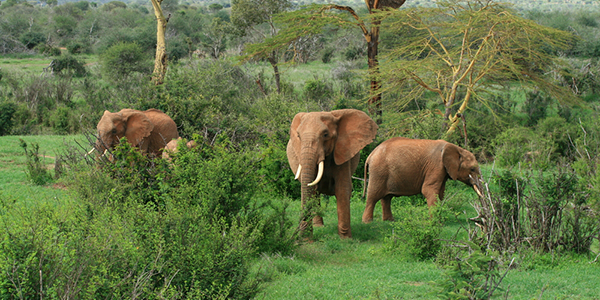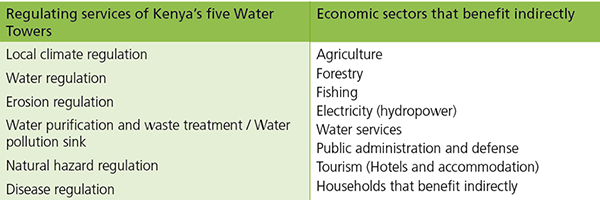
Kenya’s constitution and the country’s “Vision 2030” development strategy state that forest cover should increase to 10% from the current 6.99%. But, without real evidence on the contribution of forests to the economy, action to meet this commitment had been slow.
The Kenya Forest Service had long expressed concern about the underreporting of the forests’ true value in the national official statistics report. It collaborated with various government agencies, the United Nations Environment Programme (UNEP) and the Food and Agriculture Organization (FAO), to construct a forest account in 2009 to capture the full value of forest resources in the official statistics.
The accounts revealed that forests contributed around 3.6% of GDP, versus the 1.1% listed in the Kenyan national accounts. The national accounts did not include items such as charcoal production or the contribution of timber and non-timber products to the subsistence economy. They also did not take into account the key ecosystem services forests provide such as climate regulation, water, and natural hazard prevention (see box below).
To build on the preliminary work on forest accounts, the Kenya Forest Service, in collaboration with UNEP, carried out a study to quantify the impacts of deforestation, which culminated in the 2012 report, "The Role and Contribution of Montane Forests and Related Ecosystem Services to the Kenya Economy" (pdf). The montane forests of Kenya, better known as Kenya’s "Water Towers," encompass more than a million hectares of land and provide more than 75% of the renewable surface water resources of Kenya.
Deforestation a blow to Kenya's economy
The study showed that deforestation causes a severe blow to Kenya’s economy: in 2010, the total net cumulative effect of deforestation was a loss of nearly US$ 19 million (2010 values), which had a substantial multiplier effect on the rest of the economy.
Deforestation adversely affects Kenya’s water yield and water-dependent sectors, as well as a range of other economic sectors: agriculture, forestry and fishing, electricity and water, hotels and accommodation and the public administration and defense sectors. Together these contributed between 33-39% to GDP between 2000-2010.
"The indirect costs of deforestation are borne by sectors and households elsewhere in the economy, through the reduction in the value of regulating services. Whereas the cash value of timber and fuelwood has a once-off value, the consequences of deforestation in preceding years continue to be felt in the economy in every subsequent year," says the report.
 |
|
Linkages Between Kenya’s Forest Regulating Services And The Rest Of The Economy |
Source:UNEP 2012, Table 4.2, p. 23, http://www.unep.org/pdf/Montane_Forests.pdf (pdf)
This study has become a key document shaping forest management in Kenya in the past year. The Government is investing more in the forestry sector to achieve 10% forest cover and the Ministry of Finance has agreed to increase the forest sector’s budget.
Shoring up support from stakeholders
The findings are also catalyzing a response and support from a range of donors and the private sector. With better data, it is possible to tap into other initiatives like the REDD+ program (Reducing Emissions from Deforestation and Forest Degradation "plus" conservation, the sustainable management of forests and enhancement of forest carbon stocks).
Representatives of the Kenya Forest Service and the water and energy sectors are also discussing charging fees to forest users commensurate with the ecosystem services that forests provide. The idea has been well received, and the additional income would be used to finance forest management.
Dialogue between Kenya’s Forest Service and National Bureau of Statistics is in advanced stages about including annual updates of the forest accounts as part of regular statistical activity. Kenya’s actions show that forest accounts can be a useful tool for developing policy and allocating budgets, leading to better management of forests.
